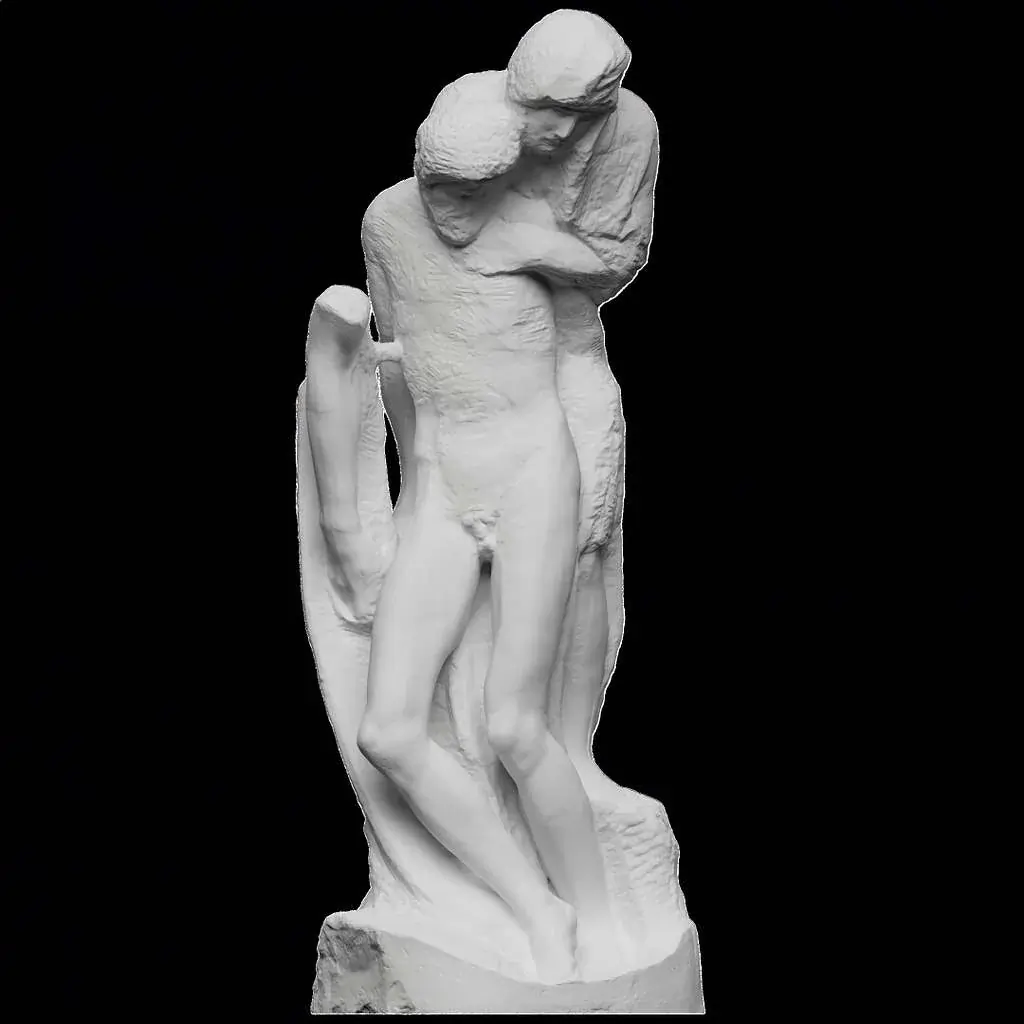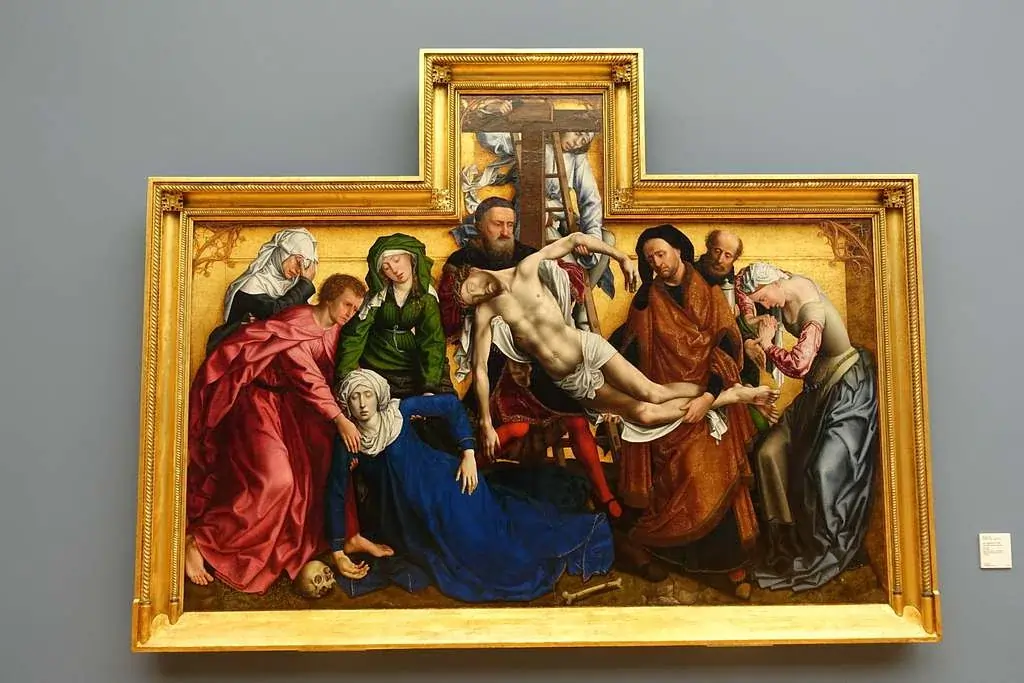The Rondanini Pietà is a piece that truly reflects the depth of an artist’s final days, like few other artworks can do so effectively. Michelangelo dedicated himself to this masterpiece until six days prior to his passing away. This sculpture serves as a testament, to his changing artistic perspective and spiritual exploration.
The Rondanini Pietà is not only Michelangelo’s sculpture; it symbolizes the peak of his lifelong journey, into the realms of faith and artistry.
Let’s delve into the backstory of this masterpiece as we unravel its history and evolution over time while delving into the technical hurdles Michelangelo encountered and deciphering its deep religious meanings together with why the unfinished elegance of the Rondanini Pietà remains a source of fascination, for art enthusiasts and academics alike.
The Genesis of Michelangelo’s Final Masterpiece
During the period of the 1550s decade unfolds Michelangelo’s journey, towards his great and final masterpiece. The Rondanini Pietà Lets delve into this fascinating era that influenced both the artist and his creation.
Historical context of the 1550s
The year 1550s can be considered as the years of religious changes and revolutions throughout Europe. It will also see how the Protestant Reformation’s waves reached Italy and how the religious atmosphere of the time influenced Michelangelo. The Catholic Church’s reaction in the form of Council of Trent would later on alter the nature of religious art and yet Michelangelo would not budge from his individualistic approach.
Michelangelo’s spiritual journey
At this time, I am particularly interested in the spiritual development of Michelangelo. The artist’s intimate friendship with Vittoria Colonna, a religious poetess, had a great impact on the artist’s worldview. The two friends’ discussions, which were focused on faith and art, contributed to the creation of the Rondanini Pietà. This was also reflected in the art where there was an evident concern with death and salvation.
Commission and creation timeline
Unlike his earlier works, the Rondanini Pietà wasn’t commissioned – it was a deeply personal project. Here’s how the creation unfolded:
- 1552: Initial work begins
- 1553: First version temporarily abandoned
- 1555: Work resumes with significant changes
- 1564: Continues until February 12, just six days before his death
This timeline is significant because Michelangelo created this work for his own pleasure and without any outside constraints. Whereas in the Rondanini Pietà we can observe an artist who has been given total artistic freedom, and is working solely from the perspective of his art and his faith.
Evolution Through Multiple Versions
Observing the Rondanini Pietà in the day prompts me to reflect on the narrative of artistic evolution encapsulated within this piece of marble artistry, by Michelangelo—from its classical roots, to its transcendent spiritual essence.
Initial classical design
In the representation I examine showcases Michelangelo’s classical education evident, in the artworks depiction of Christ with his separate right arm and legs supported by a figure wearing a turban. A composition that would have resonated with Renaissance viewers familiar with such themes, from that period of art history this early style mirrors his previous creations characterized by accurate anatomical details and well-proportioned figures.
Dramatic transformations
What fascinates me most are the bold changes Michelangelo made to his creation. Here are the most striking transformations:
- The supporting figure evolved from a male to the Virgin Mary
- Christ’s torso was dramatically thinned and elongated
- The Virgin’s face was repositioned, turning from right to left
- The figures were brought closer together, almost merging into one
Final spiritual interpretation
I can observe how Michelangelo transitioned from Renaissance naturalism to a style, in his work. The elongated figures and their spiritual unity signify a shift, from his approach. Embrace a style reminiscent of Gothic sculpture. What captures my attention the most is the way Christ’s figure appears to arise from Mary’s figure. A poignant spiritual symbolism skillfully chiseled into the stone.
The process of evolution, in Michelangelo’s work goes beyond artistry—it delves into the realm of expression and spiritual growth for the artist himself as he shaped his evolving spiritual perspective into the marble canvas before him. Through observation of his creations one can discern how Michelangelo’s sculptures evolved from Renaissance figures to embody a sense of mysticism and introspection. The deliberate unfinished aspects of some pieces aren’t indicative of incompleteness. Reveal an ongoing dialogue, between creator and material that persisted until the artist’s final moments.
Technical Mastery in Marble
When considering the technical aspects of the Rondanini Pietà I am simply in awe of how Michelangelo was able to produce such a masterpiece even in his late years. The conditions that the artist had to work under when sculpting at the age of 89 only makes this piece that much more incredible.
Carving techniques and challenges
I find Michelangelo’s direct carving method particularly fascinating. He worked without intermediary models, using his preferred tool – the cane (dog-toothed chisel) – which left distinctive groove marks still visible today. His tools included:
- Traditional sculptor’s hammers
- Various sized chisels for detail work
- Toothed tools for surface texturing
- Rasps for smoothing
Working by candlelight in his final years, I can only imagine the incredible focus required to chip away at the resistant marble, especially given the physical limitations of his age.
Material choices and limitations
The marble block was quite challenging to work with as it had pyrite inclusions that caused sparks when struck by a chisel strike. I noticed there were micro cracks in the stone with some visible, at its base that might have influenced Michelangelo’s choices. With these imperfections, in Carrara marble to deal with he had to adjust his vision time and again.
Unfinished elements as artistic expression
While others may consider it as unfinished or incomplete, I see it as deliberate artistic decision. The contrast in the finish of the figures ranging from the smooth and polished legs of Christ to the crude and unpolished upper bodies is very striking. I think that the decision made by Michelangelo to leave some parts of the work unfinished was not because he could not complete it but for him it was for his spiritual development. The unfinished parts of the statues emit light and shadow as if they were polished and the effect that could not be achieved with highly polished marble.
Symbolic Significance and Religious Meaning
The Rondanini Pietà has a very deep and significant meaning which is portrayed in it and this is the reason it speaks to me on various levels. Looking at this work, I am able to see different aspects of Christianity not only in the religious context but also in the context of human feelings and experiences.
Christian iconography
I find it fascinating how this artwork respects and goes beyond the style of artistry, from Michelangelo’s time by blending Mary and Christ into a single entity that symbolizes a deeper spiritual connection rather, than just a typical portrayal of the deposition scene.
- The vertical composition suggesting resurrection
- The merged forms symbolizing spiritual unity
- The simplified features emphasizing divine essence
- The rough surfaces suggesting transformation
Death and resurrection themes
I think what makes the Rondanini Pietà so powerful is the fact that it depicts both death and yet, the possibility of resurrection. The use of vertical thrust and shape makes the composition dynamic, suggesting the movement towards the heavens while the close proximity of the mother and son conveys the idea of divine affection despite death. This is a great example of how the subject of death can bring about the idea of new life in the Christian faith.
Personal spiritual reflection
I believe that this piece of art symbolizes Michelangelo’s beliefs as he faced his own mortality. It seems to me that he transcended depiction and aimed for a spiritual truth. The deliberate simplification of shapes and the ethereal appearance of the figures show his view, on faith. Emphasizing essence, over mere physical beauty.
The sculptures incomplete condition we discussed earlier from a viewpoint acquires significance when examined from a spiritual angle… To me personally it symbolizes the voyage of faith that is never truly finished in our existence. The mysterious amalgamation of the forms resonates with me as Michelangelo’s contemplation, on the connection between humanity and divinity and the interplay, between suffering and salvation.
Conclusion
The Rondanini Pietà represents Michelangelo’s expression. A masterpiece that goes beyond traditional ideas of being finished or incomplete. As I delved into this piece of artistry further I uncovered how its appearance of being unfinished actually unveils insights, into the evolution of art and spiritual development.
What impresses me the most, about this work of art is how it reflects Michelangelo’s artistic evolution from classical beauty to spiritual depth – mirroring his transition from a renowned Renaissance artist to a reflective seeker of spiritual truth’s. The artistic hurdles he conquered at the age of 89 while tirelessly creating until his very end truly showcase his unyielding commitment, to his passion and skill.
The true essence of the sculpture doesn’t lie in perfection but in its emotional sincerity. Every rough and unfinished detail narrates a fragment of a tale. A tale of belief, mortality and the ceaseless pursuit of enlightenment. This elevates the Rondanini Pietà beyond being Michelangelo’s creation; it embodies the deepest reflection of an artists enduring conversation, with marble, significance and impermanence.
FAQs
Q1. What makes the Rondanini Pietà unique among Michelangelo’s works? The Rondanini Pietà is Michelangelo’s final masterpiece, worked on until just days before his death. It’s unique for its unfinished state, which reflects the artist’s evolving spiritual vision and artistic journey from classical perfection to spiritual abstraction.
Q2. How does the Rondanini Pietà differ from traditional Pietà representations? Unlike traditional Pietàs, the Rondanini Pietà merges the figures of Mary and Christ, creating a spiritual unity that transcends conventional representation. The vertical composition suggests resurrection, while the simplified features emphasize divine essence.
Q3. What challenges did Michelangelo face while creating the Rondanini Pietà? Michelangelo faced significant challenges, including his advanced age (89), working by candlelight, and dealing with a marble block containing pyrite inclusions and micro-cracks. These limitations forced him to adapt his vision repeatedly.
Q4. Why is the Rondanini Pietà considered “unfinished,” and what does this signify? The varying states of finish in the sculpture are intentional artistic choices rather than signs of incompletion. The rough surfaces and unfinished areas create a visual dialog that serves Michelangelo’s evolving spiritual vision and adds depth to the work’s meaning.
Q5. What spiritual themes are expressed in the Rondanini Pietà? The Rondanini Pietà embodies themes of death and resurrection, divine love transcending death, and the ongoing journey of faith. It represents Michelangelo’s personal spiritual testament, reflecting his mature understanding of faith and the relationship between human and divine.



